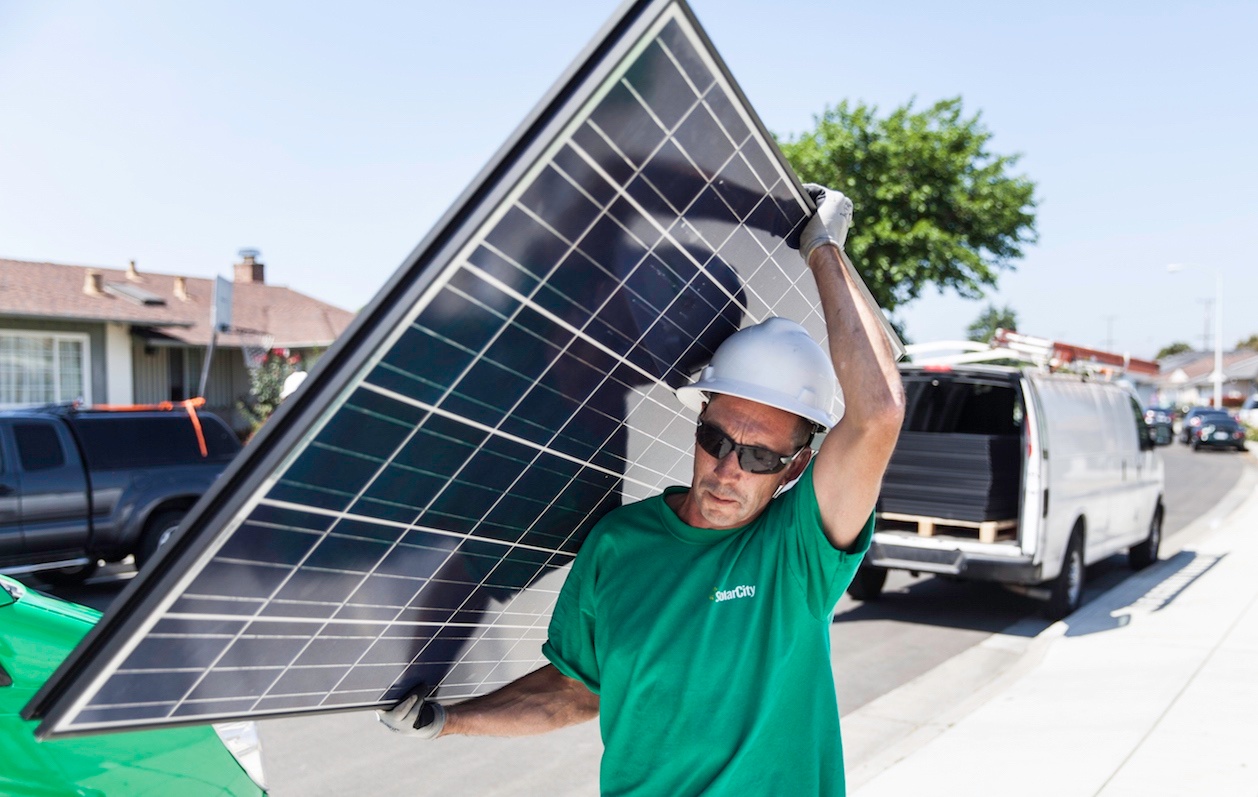This post is one in a series featuring the complete slate of advanced energy technologies outlined in the report This Is Advanced Energy.

Image courtesy of SolarCity.
Distributed solar power uses the same photovoltaic (PV) technology as large-scale plants, but specifically refers to distributed generation (DG), i.e., electricity produced at or near the point where it is used, such as at residential, commercial, industrial, and municipal buildings or facilities. Most distributed systems are roof-mounted, but some are ground-mounted, either in open fields, atop closed landfills, or on canopies at parking facilities. There are several types of solar panels distinguished by the semiconductor material used to convert sunlight into electricity, with crystalline silicon as the preferred choice for space-limited distributed applications due to its high efficiency.
The technical potential of residential and commercial rooftop solar is estimated to be nearly 600 GW, enough to produce approximately one quarter of the electricity generated in the United States in 2014.
Distributed solar power has achieved remarkable growth over the past ve years, becoming a popular choice for business and residential consumers in every market where it has been readily available. By the middle of 2015, nearly 800,000 homes and businesses had installed over 9 GW of onsite solar capacity, a 12-fold increase since 2009. The industry added 1.2 GW in residential capacity and over 1 GW in non-residential distributed solar PV in 2014, and 1.3 GW of residential and non-residential distributed PV in the first half of 2015. Drops in total installed system prices are driven by a combination of falling equipment costs, increasing ef ciency, growing economies of scale, and declining “soft costs” associated with sales and marketing, permitting, and installation. System prices for residential and commercial PV declined 6% to 8% per year, on average, from 1998 to 2013, and are expected to keep dropping. A 2015 Deutsche Bank report predicts that installed solar prices in the United States will see a further 40% reduction to achieve grid parity in 41 states by 2017, driving installed DG solar capacity to 20-30 GW by the end of 2017.
Distributed, or “rooftop,” solar allows consumers to lower their electricity costs and exercise the choice to generate their own electricity. Options such as third-party nancing allow customers to lease a PV system or purchase the output under a long-term power purchase agreement (PPA), removing a key obstacle: the up-front cost of the system. Businesses, municipalities, educational institutions and other entities are also taking advantage of cost savings; for example, Verizon has become a leader in onsite solar by partnering with SunPower to install over 20 MW of PV to secure long-term access to affordable energy. Improvements in technology and grid operations are also increasingly enabling distributed solar to contribute positively to the grid. For example, companies like Enphase have developed smart-grid compatible advanced microinverters that maximize energy production, allow for remote monitoring, and enable the system to respond to changing grid needs.
